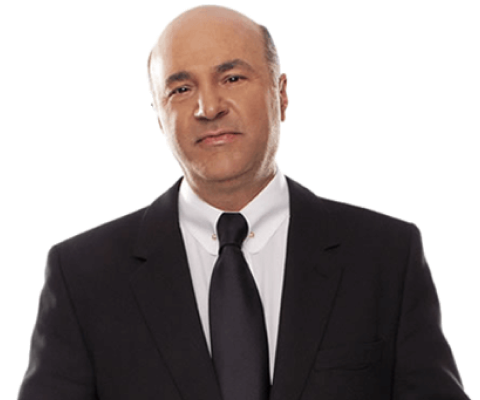How Should I List Products and Services in My Trademark Application?
How Should I List Products and Services in My Trademark Application?
A common question people ask is, “What’s the best way to list my products and services in my trademark application?” This is a good question, and the answer may be more complex than you think.
Just a reminder: a trademark does not give you a monopoly over the name, logo, or tagline in a vacuum. Trademark does not make you the owner of that name. What you end up owning is the combination, the mental link between the brand and the particular products and services that you offer.
So whenever you file your trademark application, not only do you have to tell the Trademarks Office what the trademark actually is, you should also tell them what products and services you offer under that brand.
In doing so, you are stating that nobody else in that jurisdiction has a legal right to use that brand in association with those or similar products and services.
So, there are a few strategies that you should be aware of when you file your trademark application.
Think About Potential Trademarks for the Future
First of all, you need to put your visionary cap on—you need to be very clear what products and services you are using today and that you may end up offering at some point in time in the foreseeable future.
Think about 2 to 3 years from now: what else can you start offering under that same brand? 2 or 3 years may sound like a vague number, but there’s a reason for it. That’s because in both Canada and the U.S. after your trademark gets allowed, it won't get registered until you’ve proven that you’ve already started using that trademark in reference to the products or services listed in your trademark application.
If you know that you are not going to use a product or service under that trademark name, you should now add that to your trademark. Doing so could delay your trademark becoming registered.
You only have so much time from the filing date to the registration date to actually show the use of that brand for a particular product and service. Therefore, filing a trademark with the incorrect services or products could cause you to have to start the process all over again.
But again, if you think, "You know what? I might or I might not have a book with this name, I might or I might not have a podcast, I might or I might not sell t-shirts, I don't know", then it might actually be smart to file them under that trademark. But this is only if you have a clear plan for what you would do if those projects come to fruition.
As such, you need to be very clear and specific about what you are going to be associating with this trademark.
Promotional Materials Don’t Need a Trademark
And here is the second thing to consider. A lot of business owners say, "We might have some promotional things, should we get a trademark for those?" Usually, the answer is no.
Promotional things are not what your business is about. Every single businessman or businesswoman has a business card.
We all have business cards. And the business cards have information about who we are, what we do, how we can help people to do what we do for them. But hardly anyone ever trademarks their brand in association with business cards unless we offer printing services and we make business cards for others.
So, approach the list of your products and services from that perspective: does it have value by itself, or does it only serve to promote my main products and services.
If you are giving away T-shirts that have your logo but the only purpose of that is to drive sales to your product, maybe you are an accounting firm, maybe you are a car dealership or a software company, but you are not really in the business of selling t-shirts. You don't need to trademark that brand for T-shirts in this case.
But if T-shirts are the business, and you are actually going to have a store where people are going to buy your T-shirts and that's what is going to make you money, you should certainly trademark that.
You Don’t Need to Sell Your Products in the Application
So here is another thing. It’s crucial to remember that the trademark application is not your marketing booklet. You don't have to prove to the Trademarks Office how great your products and services are. They don't care.
They don't care how good they are, they don't care how they're different from everybody else who does the same thing, all they care about is the list.
So if you have an accounting business, you don't need to tell them, "Well, we do accounting services and we have high quality and we're very personable". All they care about is: "Accounting services". That's it.
Don't use your trademark application as your marketing piece. We see these all the time, and the Trademarks Office does not like them. Applicants are often asked to rewrite their application in these cases. What’s more, sometimes this can even hurt your chances of getting a trademark registered.
Keep this in mind while writing your application so you won’t get delayed or rejected.
Make Your Application As Broad As Possible
Now, the other thing. Remember what I said: you only want to only put products and services on the list that you are currently using or that you think you might be using in 2-3 years, right?
Having said that, the way you put the things on the list, you want to be as broad as possible. If you can get protection for the entire industry, don't narrow it down too much. This is because that will allow you to use that brand, and stop everyone else from using similar brands in overlapping industries.
There is always this battle between the trademark owner and the Trademarks Office because the Trademarks Office wants the list to be very specific. They want to make sure that it's clear exactly what you are doing and you want to cover as much as you humanly possibly can.
So, one of the strategies that you can use is to file a trademark deliberately for too broad a list. Then, when they come back with an office action and say, "No, it's too broad", you will be able to chip away at it until it will be accepted.
Being broad can be a useful strategy, but only if you’re prepared to narrow your application down after it gets sent back. This strategy works because it can help establish lines for where you can go with your trademarks, and what might not be possible according to the Trademark Office.
One way to ensure that you won’t get caught off guard is to secure the help of one of our trademark experts. So if you’re preparing to file a trademark application, get in touch with us for a free trademark search.












